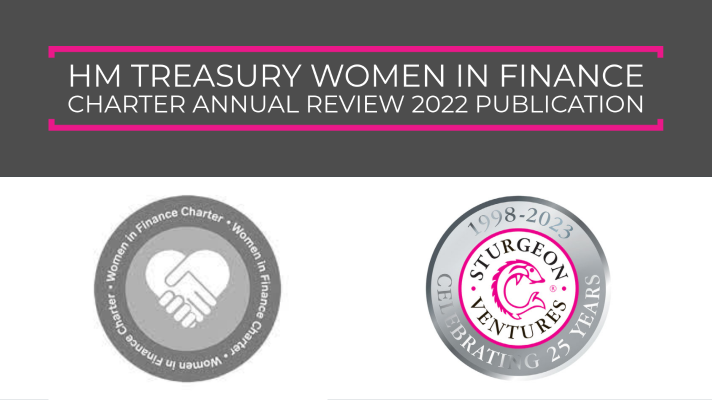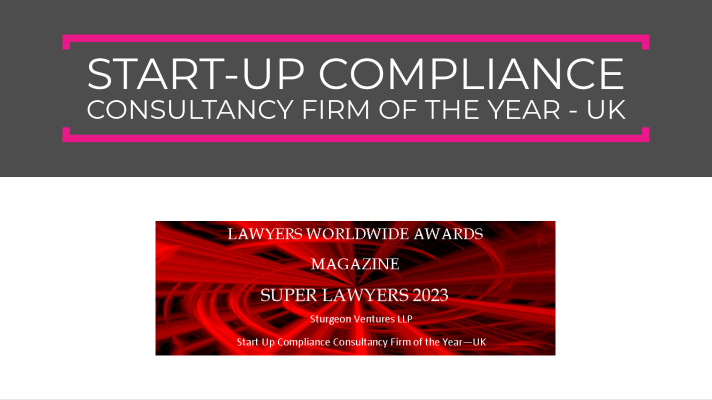Position Statement – Controversial Weapons
Purpose
This position statement (“Statement”) sets out Sturgeon Ventures LLP’s {hereafter “Sturgeon”) approach (“Approach”) to ensuring that it minimises its exposure to controversial weapons, which are considered for the purposes of this position statement as being: cluster munitions, anti-personnel landmines (“APLs”) and white phosphorus.
Scope
Sturgeon’s Approach applies to all funds managed by Sturgeon, whether directly managed or delegated to Sturgeon by external AIFMs and UCITs managers around the globe.
Externally
This Statement is made publicly available on Sturgeon’s website and can be issued to external parties of Sturgeon, such as regulators, auditors, trustees, depositaries, and clients or potential clients, at any such party’s request. For the avoidance of doubt, no further approval from Sturgeon is required for providing a copy of this Statement to any such external party.
Variance
Where a jurisdiction applies more rigorous standards than those required by the Approach, those standards must be adhered to in the relevant jurisdiction.
Overview
Sturgeon acknowledges and supports, both legally and on principle, international legislation prohibiting involvement with cluster munitions, APLs and white phosphorus, as these are weapons whose production or certain specified uses are prohibited under international conventions.
Sturgeon supports the principles enshrined in both the Convention on Cluster Munitions 2008 (the “Convention on Cluster Munitions”), the 1997 Convention on Anti-Personnel Mines (the ‘Mine Ban Treaty’) and the Convention on Certain Conventional Weapons 1980, which ban either the specified weapons as defined by the relevant convention/treaty or specified uses thereof (as referenced below in “Definitions”).
As a manager of assets for clients around the world, Sturgeon not only seeks to ensure compliance with all laws relevant to our clients’ investments regarding the financing or proliferation of cluster mines and APLs, but also strives to avoid investment in these weapons, as set out in detail below.
Sturgeon’s Approach is to seek full compliance with international conventions and treaties on controversial weapons and will respond quickly to any future legislative changes in this area.
Approach
Sturgeon does not, and will not, knowingly invest in or finance the development, production, assembly, acquisition, repair, sale, use, possession, transport, transfer, stockpiling or conservation of cluster munitions, APLs or white phosphorus. This applies both to Sturgeon’s direct and indirect investments, as defined by the “Scope” set out below.
Sturgeon maintains a list of assets with known exposure to cluster munitions, APLs or white phosphorus which are prohibited from investment by its funds. Sturgeon retains the right to release information regarding constituents of the list(s) as it deems appropriate.
Scope
In order to adhere to its Approach, Sturgeon will not knowingly subscribe for, or support the issue of, any security or other financial instrument issued by a company or other legal entity (including a fund) involved with cluster munitions and/or APLs or white phosphorus.
As Sturgeon manages both direct and indirect investments, and has both active and passive holdings, there may be instances where indirect exposure to potential issuers involved in controversial weapons may inadvertently occur. These instances include, but are not limited to, circumstances where Sturgeon is not able to exercise full discretion in the choice of investment (through agreement with the client), in tracking an index, or where another manager has discretion over the underlying investments.
If, in these instances, Sturgeon subsequently becomes aware that an underlying fund is actively making investments in companies or entities which would lead to a material breach of Sturgeon’s Approach as set out here, then Sturgeon will exit such investments.
Application
In its direct investments, Sturgeon considers, prior to making any investment, the business of companies or other legal entities in which a Sturgeon investment invests.
With regard to investments in indirectly managed funds, Sturgeon considers the investment objective and policy (IOP) of such funds as stated in the fund’s prospectus or other offering document, and the extent to which the fund’s stated objective or policy (as applicable) includes involvement in the manufacture or distribution of cluster munitions and/or APLs.
Transparency on the Prohibited Investments List
Sturgeon’s Controversial Weapons Approach is published on the firm’s website:
As stated above, Sturgeon maintains a list of entities which it views as prohibited investments under its Approach (“the “Prohibited Investments List”) which is available on request, subject to the following.
Sturgeon does not publish the entire list of companies/entities contained on its Prohibited Investment List, as these lists are the intellectual property of Sturgeon.
However, Sturgeon’s management team may, at its sole discretion, confirm (in agreement with Sturgeon’s Legal team) specific names which are on the Prohibited Investments List, in response to client queries, the completion of Requests for Proposals, or similar stakeholder engagements.
Definitions:
Cluster munitions
Under the Convention on Cluster Munitions, a cluster munition (or cluster bomb) is defined as being a conventional munition designed to disperse or release explosive sub-munitions, each weighing less than 20 kilograms and including those explosive sub-munitions. Explosive sub-munitions are defined as a conventional sub-munition that, in order to perform its task, is dispersed or released by a cluster munition and is designed to function by detonating an explosive charge prior to, on or after impact.
The definition excludes the following from being cluster munitions or explosive sub-munitions:
- a munition or sub-munition designed to disperse flares, smoke, pyrotechnics or chaff or a munition designed exclusively for an air defence role;
- a munition/sub-munition designed to produce electrical/electronic effects;
- a munition that, to avoid indiscriminate area effects and the risks posed by unexploded sub-munitions, has all of the following characteristics:
- each munition contains fewer than ten explosive sub-munitions;
- each explosive sub-munition weighs more than four kilograms;
- each explosive sub-munition is designed to detect and engage a single target object;
- each explosive sub-munition is equipped with an electronic self-destruction mechanism;
- each explosive sub-munition is equipped with a self-deactivating feature.
Anti-personnel landmines
APLs are defined by the Mine Ban Treaty as mines “designed to be exploded by the presence, proximity or contact of a person and that will incapacitate, injure or kill one or more persons.” Mines that are not covered by the Mine Ban Treaty include those that are remotely triggered or are anti-vehicle mines.
White phosphorus
Although white phosphorus is used as an industrial chemical without restrictions, certain uses in weaponry are banned or restricted by international laws: in particular, those related to incendiary devices. Article 1 Protocol III of the Convention on Certain Conventional Weapons defines an incendiary weapon as “any weapon or munition which is primarily designed to set fire to objects or to cause burn injury to persons through the action of flame, heat, or combination thereof, produced by a chemical reaction of a substance delivered on the target”. Article 2 prohibits the deliberate use of incendiary weapons against civilian targets, the use of air-delivered incendiary weapons against military targets in civilian areas, and the general use of other types of incendiary weapons against military targets located within “concentrations of civilians” without taking all possible means to minimize casualties.
Legal sources
Cluster munitions: The Convention on Cluster Munitions 2008 (“CCM”)
clusterconvention.org/files/2011/01/Convention-ENG.pdf
Anti-personnel Landmines: The Convention on the Prohibition of the Use, Stockpiling, Production and Transfer of Anti-Personnel Mines and on their Destruction 2997 (also known as the “Anti-Personnel Mine Ban Treaty,” or the “Ottawa Treaty” or the “Mine Ban Treaty”): legal.un.org/avl/ha/cpusptam/cpusptam.html
White phosphorus: The Conversion on Certain Conventional Weapons 1983; the Geneva Conventions (1949).
Article 12 Exclusions for EU Paris-aligned Benchmarks, includes Controversial Weapons exclusions
This Statement will be kept under review.
Last Reviewed: December 2023










